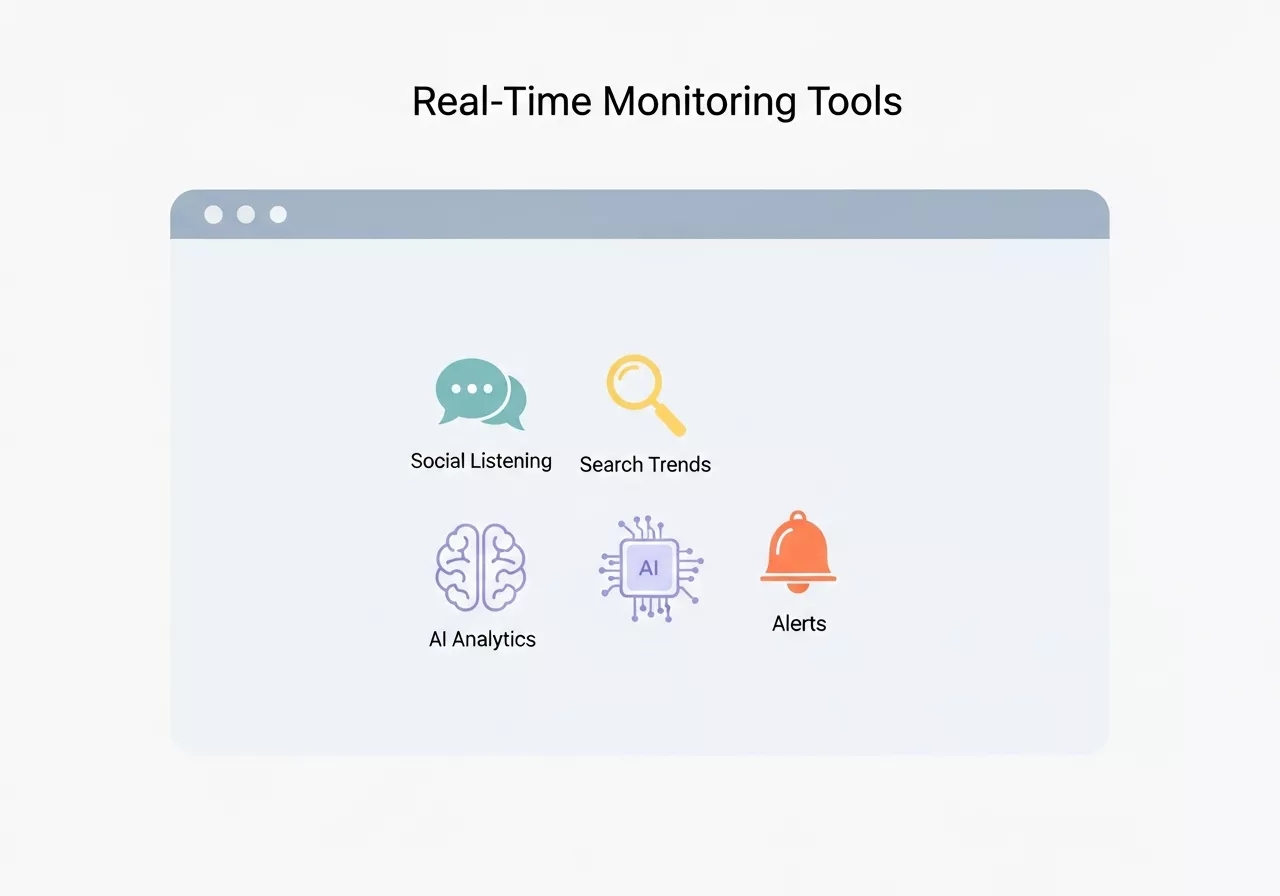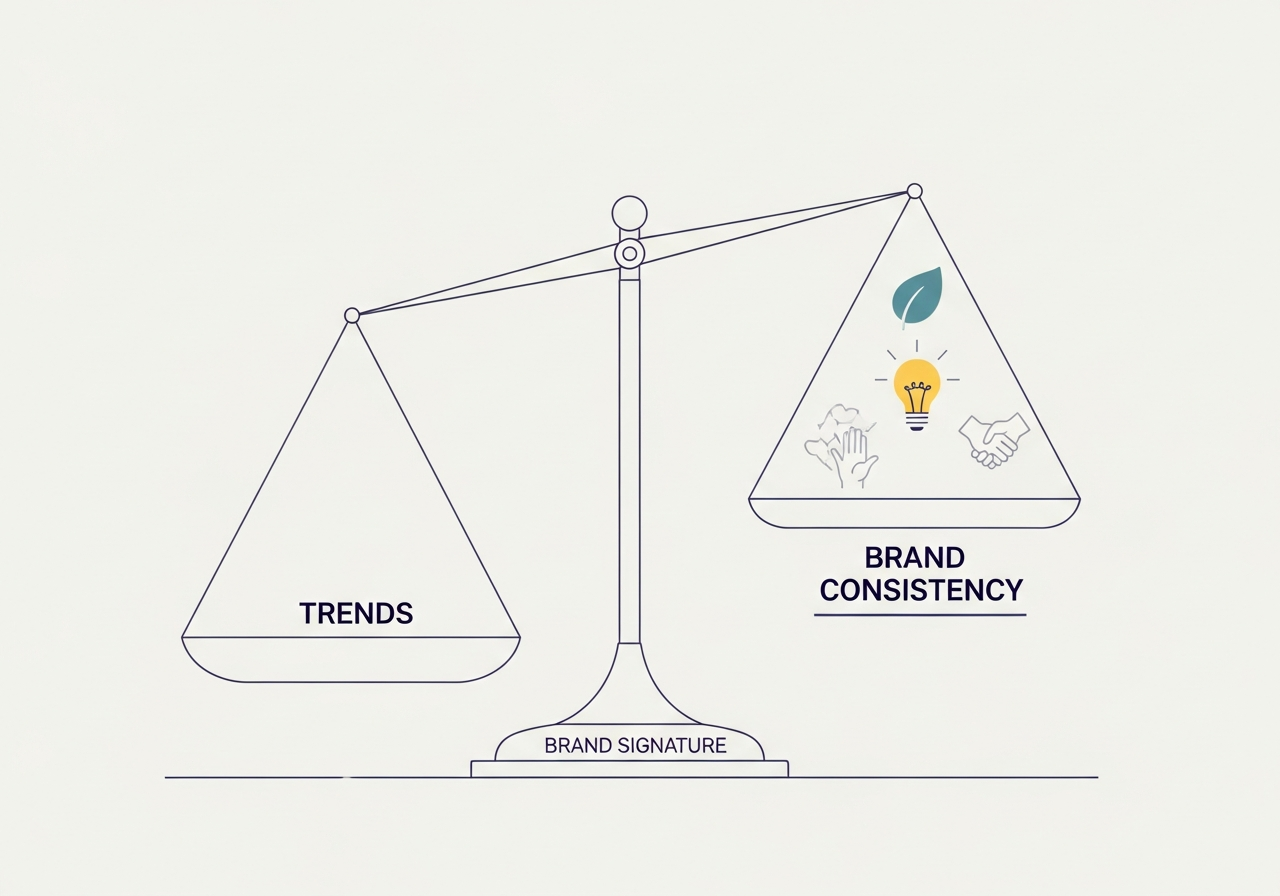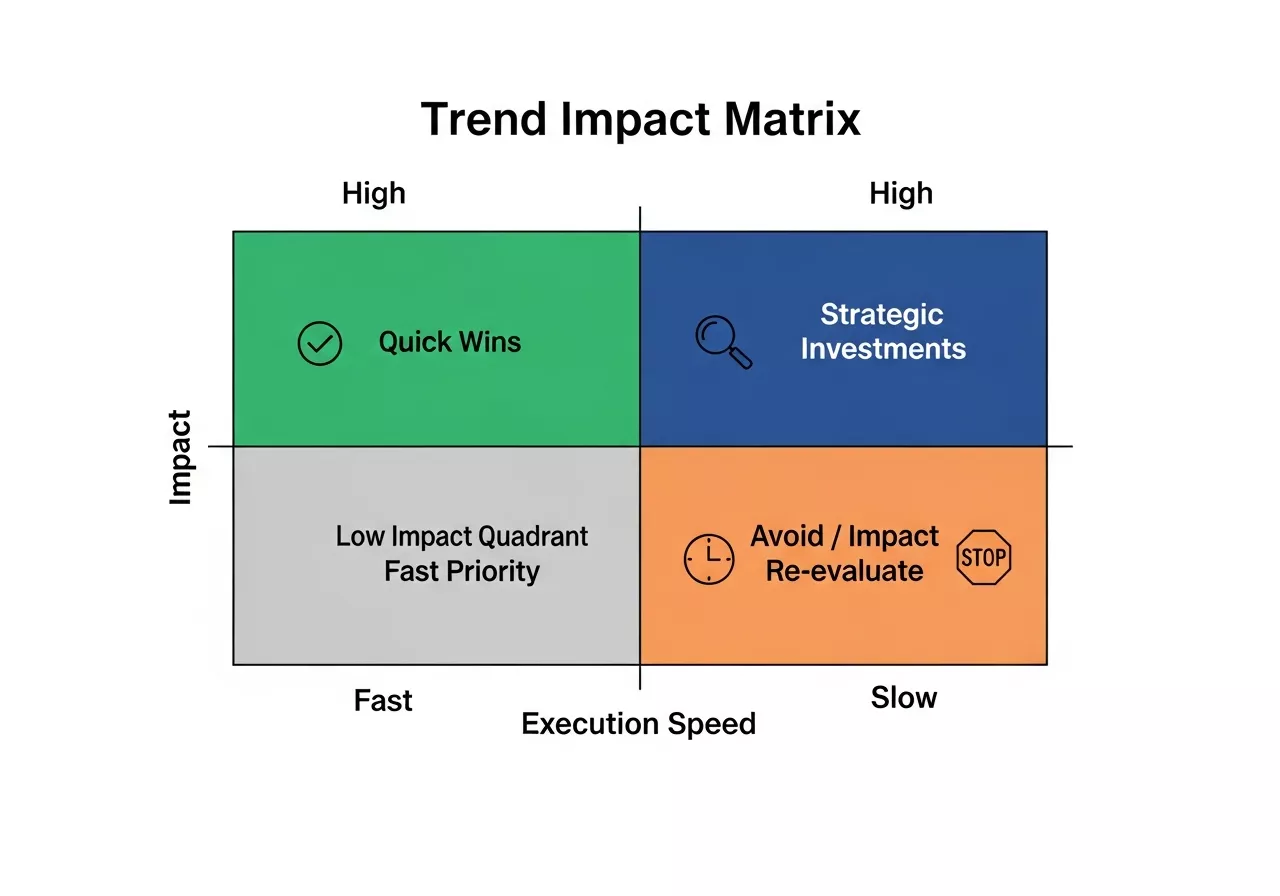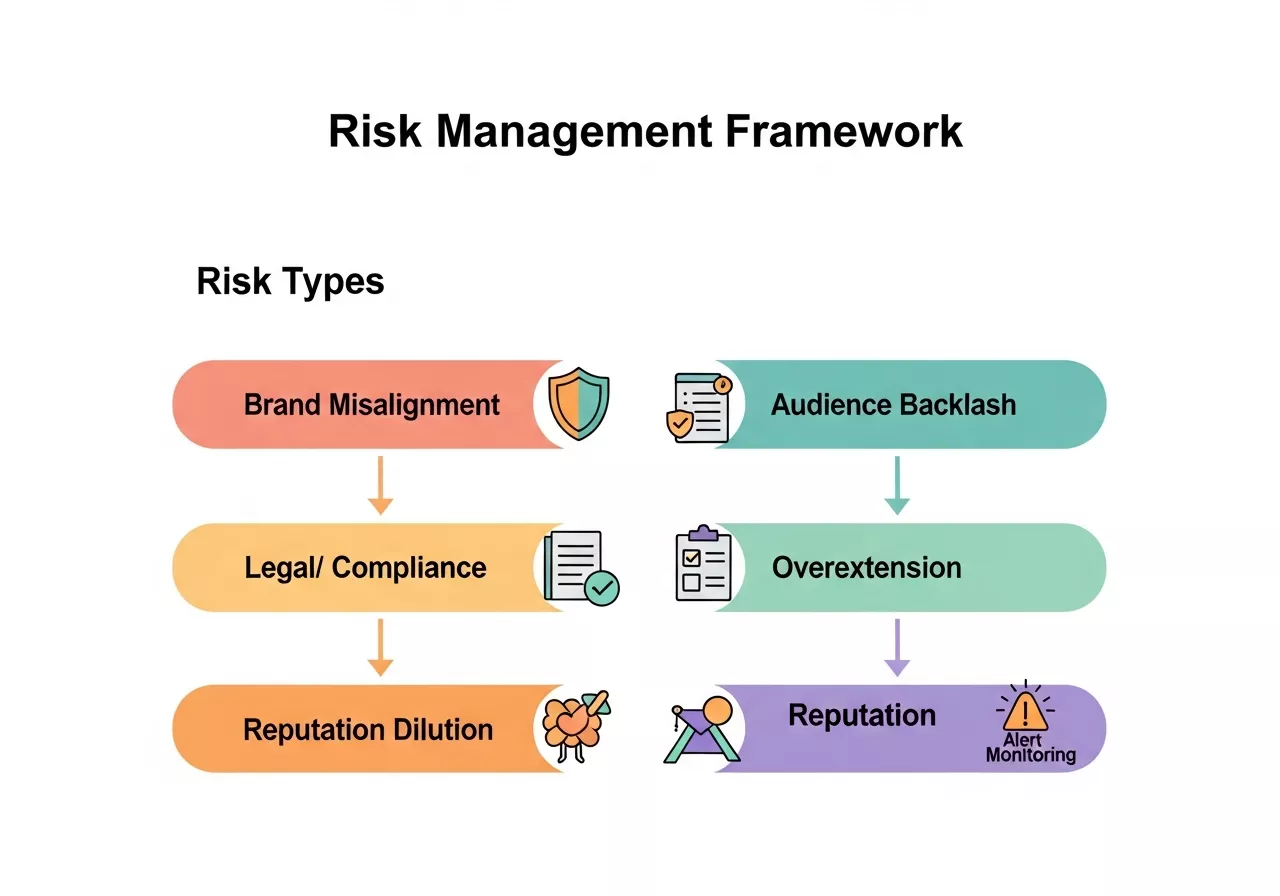
Trend marketing leverages real-time consumer insights to identify and act on emerging trends. By combining agile campaigns, influencer partnerships, AI forecasting, and cross-channel strategies—while maintaining brand alignment—businesses can drive engagement, growth, and measurable ROI.
In today’s hyper-connected marketplace, trends emerge and fade in the blink of an eye. Brands that succeed are those agile enough to spot micro-trends at their inception, analyze real-time consumer signals, and pivot quickly to ride the wave before it crests. Trend marketing isn’t just about jumping on viral memes—it’s the strategic fusion of data-driven insight, creative execution, and brand authenticity. In this comprehensive guide, you’ll discover how to harness cutting-edge tools, craft nimble campaigns, and measure impact so you can transform emerging trends into explosive brand growth.
Identifying Emerging Trends Before They Break
The cornerstone of successful trend marketing is proactive trend detection. Rather than waiting for influencers to popularize a hashtag, top marketers monitor multiple channels—social platforms, niche forums, consumer review sites, and search queries—to spot patterns. Tools like Google Trends, BuzzSumo, and Sprout Social offer quantitative data on rising topics, while Qualitative listening on Discord servers or Reddit communities uncovers sentiment nuances.
Begin by establishing daily monitoring routines: set up keyword alerts for your industry, subscribe to trend newsletters, and assign team members to scan emerging conversations. Use sentiment analysis dashboards to flag spikes in positive or negative discussions. When a topic shows a 30–50% week-over-week increase in mentions, it’s time for a deeper dive. Cross-reference these findings against competitor activities and broader cultural calendars—festivals, product launches, or policy changes—that might fuel or dampen the trend.
Leveraging Tools & Platforms for Real-Time Monitoring

Real-time monitoring is powered by an ecosystem of platforms tailored to different needs. Social listening tools like Brandwatch, Mention, and Talkwalker track millions of online conversations, offering instant alerts when brand-relevant words spike. For search behavior, Google Trends and Semrush reveal which queries are surging, while AnswerThePublic visualizes the questions your audience is asking.
Beyond quantitative metrics, adopt AI-driven solutions such as IBM Watson Natural Language Understanding or Clarabridge to interpret emotional tone and emerging subtopics within your data. Visual trend discovery can be enhanced with Pinterest Trends, which showcases rising creative and design interests. Integrate these platforms into a centralized dashboard—using connectors like Zapier or native APIs—to ensure decision-makers receive unified, actionable insights rather than scattered reports. Monitoring business trends in real time allows brands to anticipate shifts and adjust strategy proactively.
Crafting Agile, Trend-Driven Campaigns
Once you’ve identified a promising trend, speed is of the essence. Agile campaigns break down silos between strategy, creative, and media teams, enabling rapid ideation, approval, and distribution. Implement a sprint-based workflow: day one, brainstorm and storyboard; day two, finalize copy and assets; day three, launch and optimize.
Template-driven creative tools like Canva for Business and Adobe Express let non-designers produce on-brand graphics in minutes. Meanwhile, modular ad frameworks—where headlines, visuals, and calls-to-action are interchangeable—support quick A/B testing. For social platforms with ultra-fast cycles, such as TikTok and Instagram Reels, assign a “trend captain” to craft native-style short videos within 24 hours of a trend spike, ensuring your brand voice remains authentic and relevant. By aligning campaigns with business trends and social media viral trends, brands can capture both market momentum and consumer attention.
Balancing Trend Timing with Brand Consistency

While speed wins attention, reckless trend-chasing can dilute brand identity. The key is strategic relevance: only engage with trends that align with your core values and long-term positioning. Establish a trend evaluation checklist including brand fit, audience relevance, potential risks, and resource requirements. If a trend conflicts with brand tone or presents reputational hazards, sit it out or find a safer, contextually aligned angle.
For trends that pass muster, ensure your execution remains unmistakably yours. Incorporate signature color palettes, typography, and messaging pillars into every asset. Maintain a unified brand narrative by weaving your overarching story—whether it’s sustainability, innovation, or community empowerment—into trend-driven content. This harmonizes short-term reach with enduring brand equity.
Case Studies: Trend Marketing Wins
- Sportswear & Micro-Moments: A leading athleisure brand identified a surge in at-home workout queries and launched a “Deskercise” campaign featuring 15-second TikTok clips. The series earned 50 million views in two weeks and drove a 25% uptick in traffic to their fitness gear lineup. This is a prime example of viral content marketing in action, where cultural timing, platform-native content, and clear product alignment combined to create massive engagement.
- Culinary Creativity: A meal-kit service spotted the viral cloud bread trend on TikTok and released a downloadable recipe card integrated with shoppable ingredients. The initiative generated 100,000 new email subscribers and boosted subscription sign-ups by 18%.
- Sustainable Fashion Pop-Up: A direct-to-consumer clothing brand leveraged Earth Day chatter to host a live virtual design session, letting audiences vote on eco-friendly fabric prints in real time. Engagement soared by 200%, and sold-out limited-edition pieces netted $75,000 in 48 hours.
Measuring ROI & Key Performance Indicators
To prove the value of trend marketing, track both quantitative and qualitative KPIs. Primary metrics include engagement rate, share of voice, reach growth, and conversion lift. For social assets, monitor like-to-comment ratios and hashtag performance over 7- to 30-day windows. For e-commerce activations, use UTM parameters to tie campaign traffic to revenue and average order value changes.
Equally important are brand sentiment shifts and earned media value. Use sentiment analysis before and after campaign launches to quantify reputational impact. Calculate earned media value by estimating the advertising cost equivalent of impressions garnered through organic shares and mentions. Finally, capture learnings in a post-mortem report, highlighting what worked, what failed, and how to refine your trend playbook for future success.
Building a Trend-Responsive Content Ecosystem
To capitalize on fast-moving trends, brands need an adaptable content ecosystem capable of producing, modifying, and distributing assets at speed. A trend-responsive content system ensures that every part of your marketing pipeline—from ideation to publishing—can pivot instantly when cultural moments arise. This shift requires streamlined workflows, modular content assets, and always-on collaboration across creative, strategy, and analytics teams.
Key Components of a Trend-Responsive Ecosystem:
- Modular content templates for rapid creation
- Pre-approved brand messaging libraries
- Rapid-approval workflows with clear roles
- Cross-functional creative pods for faster output
- A dedicated trend response channel (Slack, Teams, etc.)
The Role of Influencers in Trend Amplification
Influencers play a central role in accelerating trend adoption. Their ability to shape conversations, humanize brands, and generate real-time engagement makes them invaluable partners in trend-driven campaigns. Rather than broad influencer outreach, brands should collaborate with creators who are already aligned with emerging micro-trends relevant to their industry.
Ways Influencers Amplify Trend Marketing:
- Rapid creation of native-style content
- Authentic participation in rising cultural conversations
- Turning niche trends into mainstream moments
- Boosting campaign visibility through duet chains, stitches, and reactions
- Adding credibility through firsthand demonstrations or tutorials
Trend Impact Matrix: How to Prioritize Which Trends to Act On

Not every trend is worth pursuing. A Trend Impact Matrix helps teams evaluate opportunities based on brand fit, potential ROI, sustainability, and execution speed. This structured approach prevents brands from reacting impulsively while still enabling agility.
Trend Impact Matrix (Table)
| Criteria | High Impact Trend | Low Impact Trend | How to Evaluate |
|---|---|---|---|
| Brand Alignment | Strong mission + audience fit | Weak connection to brand values | Evaluate tone, message, relevance |
| Reach Potential | Expanding fast across platforms | Limited to micro-niche groups | Check search + social velocity |
| Longevity | Last weeks or months | Fades in hours or days | Analyze trend lifespan curves |
| Execution Speed | Easy to produce assets quickly | Requires extensive production | Assess team capacity and resources |
Use the Matrix To:
- Prioritize high-ROI trend opportunities
- Avoid low-value, high-risk “bandwagon” moments
- Align trend execution with long-term brand positioning
Future-Proofing Your Trend Marketing Strategy
The next era of trend marketing will be defined by predictive analytics, AI-driven cultural forecasting, and hyper-personalized content. To stay ahead, brands must build systems that anticipate emerging behaviors before they manifest at scale. Future-proofing ensures that your team evolves with algorithm changes, platform shifts, and rising consumer expectations.
Strategies for Future-Proofing:
- Invest in predictive AI tools that map behavior patterns
- Build flexible messaging systems that adapt across platforms
- Create always-on research cycles to monitor cultural shifts
- Experiment with emerging formats (AR try-ons, live shopping, micro-video loops)
- Train teams on upcoming technologies and content trends
Harnessing AI for Predictive Trend Forecasting
Artificial intelligence is revolutionizing how brands detect and respond to cultural shifts. Instead of relying solely on human observation, AI tools analyze billions of data points—social conversations, search behavior, purchase patterns, and sentiment—to predict trends before they peak. By adopting AI forecasting, brands can prepare content, products, and campaigns proactively rather than reactively, gaining a significant advantage over competitors.
How AI Enhances Trend Forecasting:
- Identifies emerging micro-trends before widespread adoption
- Detects sentiment changes across social and search channels
- Predicts audience interest curves for better timing
- Automates alerts for rising keywords and conversations
- Uses machine learning to refine predictions over time
Developing a Cross-Channel Trend Deployment Strategy
Trends rarely live on a single platform—successful brands deploy trend-driven content across multiple touchpoints to maximize reach and engagement. A cross-channel strategy tailors formats, messaging, and timing to the strengths of each platform while maintaining a unified campaign theme. This multiplies visibility, strengthens brand recall, and ensures your trend-driven content meets audiences where they already are.
Key Elements of a Cross-Channel Trend Strategy:
- Platform-native execution (TikTok vs. Instagram vs. YouTube Shorts)
- Consistent core messaging tailored to each channel
- Retargeting audiences across social and search
- Coordinated publishing calendars for maximum impact
- Using social signals to inform search ads and vice versa
Influencer and Creator-Led Trend Activation
Influencers and micro-creators are often the first to spot emerging trends, giving brands a unique opportunity to capitalize on cultural moments in real time. By collaborating with the right creators, you can tap into highly engaged audiences and gain authenticity that paid ads alone cannot achieve. Influencer-led campaigns also allow brands to experiment with creative formats quickly, from TikTok challenges to Instagram Reels or YouTube Shorts.
Strategies for Influencer Trend Activation:
- Identify creators whose values align with your brand.
- Co-create content to maintain authenticity rather than imposing rigid guidelines.
- Use micro-influencers for niche markets to maximize engagement.
- Implement agile workflows to produce content quickly once trends emerge.
- Track performance metrics in real time to optimize campaigns.
Example Table: Influencer Campaign Metrics
| Metric | How to Measure | Why It Matters |
|---|---|---|
| Engagement Rate | Likes, comments, shares | Indicates audience resonance |
| Conversion Rate | Clicks leading to purchases | Measures ROI of influencer posts |
| Reach | Total audience exposed | Determines campaign scale |
| Sentiment | Positive/negative mentions | Protects brand reputation |
| Content Velocity | Time from trend identification to post | Ensures timely relevance |
This structured approach ensures that influencer partnerships are not just creative experiments but measurable contributors to brand growth.
Risk Assessment and Trend Safeguarding

While trend marketing offers enormous growth potential, it also carries risks. A poorly executed campaign or misaligned trend can generate backlash, confuse your audience, or even damage brand credibility. Establishing a robust risk management framework allows your brand to act quickly and safely, balancing speed with strategic caution.
Key Steps for Risk Assessment:
- Conduct brand alignment checks: Ensure the trend aligns with brand values and messaging pillars.
- Analyze cultural and social sensitivities: Avoid trends that may appear tone-deaf or offensive.
- Establish contingency protocols: Plan quick responses to negative reactions or misinterpretations.
- Monitor sentiment in real time: Use social listening tools to detect early signs of backlash.
- Document insights: Capture lessons to improve future trend marketing decisions.
Example Table: Risk Management Framework for Trends
| Risk Type | Assessment Criteria | Mitigation Strategy |
|---|---|---|
| Brand Misalignment | Conflict with core messaging | Skip trend or modify messaging |
| Audience Backlash | Negative sentiment spike | Immediate public response & apology plan |
| Legal/Compliance Risks | Copyright or advertising violations | Legal review before campaign launch |
| Overextension | Straining resources | Prioritize high-impact trends only |
| Reputation Dilution | Confusing brand voice | Consistent branding across all assets |
By applying a structured risk management system, brands can confidently participate in trends while protecting long-term equity and audience trust.
Conclusion
Trend marketing demands an unwavering commitment to listening, learning, and acting at lightning speed—all while safeguarding your brand’s essence. By combining robust real-time monitoring tools, agile workflows, and a disciplined evaluation framework, you can transform transient consumer interests into sustainable growth drivers. Embrace the synergy of data and creativity, build a culture of rapid iteration, and you’ll not only ride the next big trend—you’ll set the standard for how brands thrive in an ever-evolving digital landscape.
Frequently Asked Questions (FAQ) – Trend Marketing
1. What is trend marketing?
Trend marketing is a strategy where brands identify emerging consumer trends and cultural moments, then create campaigns to engage audiences while the trend is active. It combines real-time data analysis, creative content, and brand alignment to drive engagement, visibility, and conversions.
2. How do brands identify emerging trends?
Brands use a mix of quantitative and qualitative tools:
- Quantitative: Google Trends, BuzzSumo, Semrush, Sprout Social.
- Qualitative: Social listening on niche forums (Reddit, Discord), monitoring influencer content, and tracking sentiment analysis.
Daily monitoring routines, keyword alerts, and cultural calendars help detect trends before they peak.
3. How can I ensure a trend fits my brand?
Use a trend evaluation checklist:
- Brand fit and audience relevance
- Potential ROI and engagement opportunities
- Resource requirements and execution feasibility
- Risk and reputational considerations
If a trend conflicts with your core values, it’s better to skip or adapt it creatively.
4. What role do influencers play in trend marketing?
Influencers accelerate trend adoption and provide authenticity. They:
- Create native-style content quickly
- Amplify engagement through duets, stitches, and reactions
- Transform niche trends into mainstream moments
- Add credibility through tutorials, reviews, or demos
5. How do I measure the success of trend marketing campaigns?
Track both quantitative and qualitative KPIs:
- Engagement rate (likes, shares, comments)
- Conversion lift and revenue from campaign traffic
- Reach growth and share of voice
- Brand sentiment and earned media value
- Post-mortem analysis to refine future campaigns
6. How can AI help with trend forecasting?
AI analyzes billions of data points (social conversations, searches, purchases) to:
- Identify emerging micro-trends before they peak
- Detect sentiment shifts and audience interest curves
- Automate alerts for rising topics
- Predict optimal timing and content formats
This allows brands to act proactively rather than reactively.
7. What are the risks of trend marketing, and how can I mitigate them?
Risks include:
- Brand misalignment
- Audience backlash
- Legal or compliance issues
- Resource overextension
- Reputation dilution
Mitigation strategies: Conduct alignment checks, monitor sentiment in real time, plan contingencies, and document lessons for future campaigns.
8. Can small businesses benefit from trend marketing?
Yes! Small businesses can leverage micro-trends, niche communities, and agile workflows to compete with larger brands. Using modular content, influencer collaborations, and fast execution, small brands can achieve high engagement with lower budgets.
9. How often should a brand review its trend marketing strategy?
Trend marketing requires continuous monitoring. Brands should:
- Review daily for emerging trends and social spikes
- Conduct weekly performance analysis for ongoing campaigns
- Perform monthly or quarterly post-mortems to refine workflows, tools, and KPIs
10. What’s the most important factor for successful trend marketing?
Speed and relevance are crucial—but alignment with brand identity is paramount. Acting fast on a trend only works if it resonates authentically with your audience and reinforces your brand’s values.
Learn more about: How AI-Driven Trend Marketing is Shaping the Future of Brand Growth










Leave a Reply